A collection of notes from a newly practicing witch 🖤 main: @renaegaia
Don't wanna be here? Send us removal request.
Text

🔥🔥🔥
#repost#witchy#witchcraft#goddess#goddesses#lilith#Hekate#Hecate#sekhmet#kali#the morrigan#Artemis#frejya#freyja#Aphrodite#venus#medusa#Persephone#dark goddes#dark goddesses#divine feminine#witch#sovereign#wild woman#untamed woman
7 notes
·
View notes
Photo
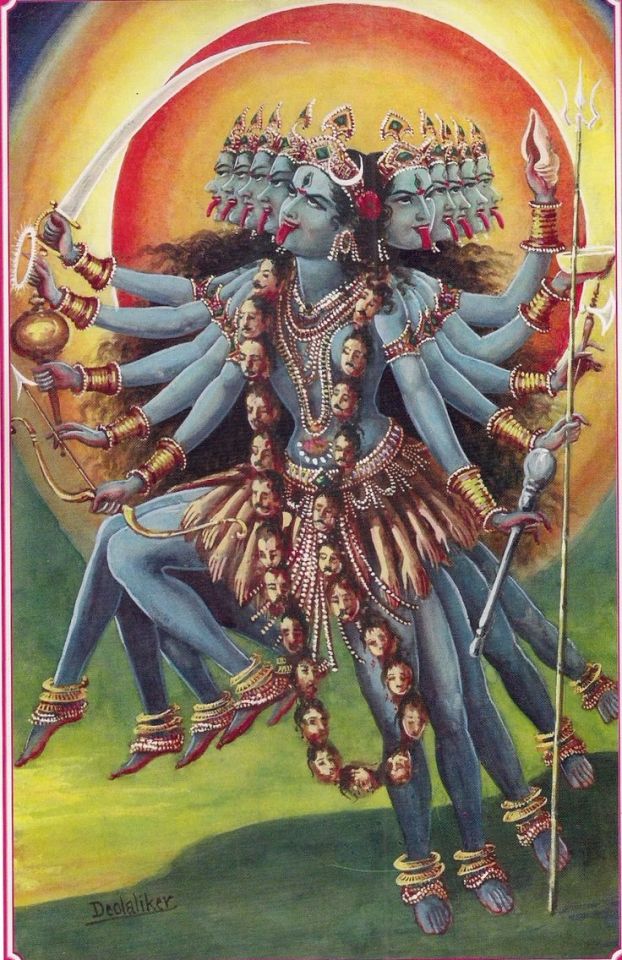
2K notes
·
View notes
Text

Charles Baudelaire, from Sed non Satiata (tr. by Roy Campbell)
5K notes
·
View notes
Text
𝕭𝖑𝖆𝖈𝖐 𝕸𝖎𝖗𝖗𝖔𝖗 𝕾𝖈𝖗𝖞𝖎𝖓𝖌 🪞
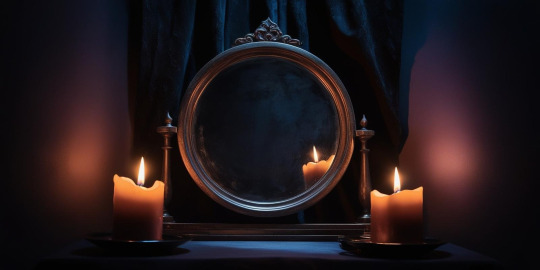
Black mirror scrying is a divination practice that uses a polished, reflective black surface as a portal for accessing visions, guidance, and hidden knowledge. This ancient method, often associated with shadow work and connecting to the subconscious, allows the practitioner to focus their intention and enter a meditative state.
Origins and History
The use of reflective surfaces for scrying dates back to ancient civilizations, including the Aztecs, who used obsidian mirrors, and medieval Europe, where polished metal and water-filled bowls were common. Black mirrors, often made of glass painted black, became popular in the occult revival of the 19th century.
Preparation
1. Cleansing the Mirror
Physically clean the mirror with a soft cloth to remove dust and smudges.
Energetically cleanse with smoke, sound, or a charged crystal.
2. Setting the Space
Choose a quiet, darkened space free from distractions. Candlelight is ideal as it enhances the reflective quality without creating glare.
Place the black mirror on a stable surface, angling it slightly upward for comfort.
3. Personal Preparation
Ground yourself through deep breathing or visualization.
Set an intention, such as seeking clarity on a question or connecting with a guide.
The Process
1. Gaze softly into the mirror. Avoid looking at your reflection; instead, focus on the depth of the black surface.
2. Let your mind relax and allow images, symbols, or sensations to emerge naturally. Do not force the process.
3. Stay present and open. If distractions arise, gently return your focus to the mirror.
Interpreting the Visions
Record your impressions in your grimoire immediately after the session. This includes images, emotions, and intuitive insights.
Research any symbols or messages that stand out.
Revisit your notes after a few days for additional clarity or connections.
Tips for Effective Scrying
Work with planetary or lunar energies to enhance your practice. For example, scrying during the New Moon is excellent for introspection.
Incorporate herbs or oils like mugwort or frankincense to heighten intuition.
Practice patience; scrying takes time to master.
Warnings and Boundaries
Be mindful of opening yourself to energies; always close the session by grounding and shielding.
Avoid scrying when emotionally unstable or physically drained, as this may distort your experience.
Closing the Session
Express gratitude to the mirror, your guides, and the space.
Store the mirror in a safe, wrapped place to protect its surface and energy.
#divination#scrying#black mirror#black mirror scrying#obsidian mirror#witchcraft#witch#witchy#grimoire
48 notes
·
View notes
Text

The Rose Cross Lamen Talon Abraxas
The Rose Cross, symbol of the heart chakra in full bloom
When the spirit enters a human body it takes up a cross, the cross of matter, the synthesis of the four elements. There is not much point in wearing crosses round our necks or putting up crosses in churches and cemeteries if we fail to understand that it is humans themselves who are the cross. Man is the cross, and it is this cross that we must work with.
We often associate the cross in our minds with death and negation and that is a mistake for, when the spirit enters into the cross, it becomes the beginning of life. When an Initiate prays he faces towards the four cardinal points of the universe in turn, thus marking the sign of the cross to show that his spirit is about to work on matter.
What it means to cross oneself
Each of the cardinal points is ruled by an Archangel: in the East is Mikhaël, in the West Gabriel, in the North Uriel and in the South Raphaël. This rite of turning to face the four cardinal points before praying has been perpetuated in the Christian religion in the form of the Sign of the Cross.
When a Christian touches their forehead, their solar plexus, their left and then their right shoulder with the fingers of their right hand, saying ‘In the name of the Father and of the Son and of the Holy Spirit, Amen’, they are communicating with the four dimensions of space, the matter on which their thought and love are about to work.
The Rose Cross is the symbol of the perfect human being
The Rosicrucian symbol consists of a red rose in the centre of a cross. The rose represents the heart, the full flowering of the heart chakra in man, seen as the sublimation of the cross. This chakra can only be made to blossom by love, the colour and fragrance of which are those of the rose. This is why the Rose Cross is the symbol of an Initiate who has worked so diligently at his own nature that Christ’s love, the divine love that transforms and gives life to matter, has flowered within him.
One who walks in the way of Christ becomes a Rosicrucian even if their name never appears in the membership records of the Society. The rose at the centre of the cross, therefore, is the perfect human being whose heart chakra is in full blossom -Omraam Mikhaël Aïvanhov
59 notes
·
View notes
Text
Lunar Astrology: Aligning with the Cyclical Nature of Lunar Energy

Lunar Energy refers to the subtle, intuitive, and cyclical energy associated with the Moon. It governs emotions, intuition, and the subconscious mind, reflecting the natural rhythms of life. Just as the Moon influences the ocean tides, its energy influences the ebbs and flows of our inner world, including feelings, thoughts, and instincts. Lunar energy embodies the Divine Feminine, symbolizing receptivity, nurturing, and transformation.
This energy is dynamic, shifting through its phases from new to full and back again, each stage offering unique vibrations for reflection, creation, or release. It invites us to tune into our emotional cycles, honor periods of growth and rest, and find balance between action and introspection. Lunar energy is deeply connected to intuition, dreams, and the unseen, making it a powerful force for personal and spiritual growth.
By aligning with lunar energy, we can connect more deeply to our emotions and the natural cycles of the world. Rituals, journaling, meditation, and working with the lunar phases allow us to harness this energy for intention-setting, manifestation, and healing.
Here are the phases of the Moon and suggestions for how to work with each expression of energy:
1. New Moon
Energy:
The New Moon marks the beginning of the lunar cycle, symbolizing fresh starts and potential. Its energy is quiet, introspective, and full of possibility, inviting you to plant the seeds of your intentions. This is a time for envisioning what you want to manifest in the coming weeks.
Deities:
Artemis, Lilith, Kali, Hekate
Herbs:
Sage, Chamomile, Thyme, Rosemary, Mugwort
Crystals:
Black obsidian, Moonstone, Labradorite, Clear Quartz
Rituals:
- Write down your intentions for the cycle and place them on an altar or under your pillow.
- Create a vision board.
- Perform a cleansing ritual with sage or rosemary to clear your energy.
- Grounding exercises or meditations to connect with your inner self.
- Take a cleansing bath with salt and lavender to prepare for the new cycle.
Prompts:
- What intentions am I ready to set for this cycle?
- What goals align with my highest self?
- How can I create space to invite in new opportunities?
- In what ways do I hold myself back from receiving all that I desire?
2. Waxing Crescent Moon
Energy:
The Waxing Crescent Moon is a time for growth, action, and focus. It’s about nurturing your intentions from the New Moon and taking your first steps toward your goals. The energy encourages optimism, courage, and alignment with your vision, as this Moon phases brings us the energy of momentum to work with.
Deities:
Artemis, Persephone, Apollo
Herbs:
Basil, Peppermint, Cinnamon
Crystals:
Citrine, Carnelian, Fluorite, Green Aventurine
Rituals:
- Work on your vision board and/or update your goals.
- Carry/meditate with a crystal associated with abundance or clarity, or a charm/sigil to represent your intentions.
- Perform a candle ritual, focusing on the flame as a symbol of your growing intentions. Visualize your goals manifesting from the flame.
- Start small, actionable tasks that align with your goals. (Even better to create a list and check them off as you complete them)
- Meditate on attracting positive energy and opportunities, express gratitude.
Prompts:
- What motivates me to keep pursuing my goals?
- What steps can I take to actualize my intentions?
- What fears or doubts might try to hold me back, and what can I do to overcome them?
3. First Quarter Moon
Energy:
This phase is about taking decisive action and overcoming obstacles. The energy is dynamic, encouraging courage, problem-solving, and perseverance. Challenges may arise, but they offer opportunities for growth and alignment.
Deities:
Athena, Brigid, Freya
Herbs:
Rosemary, Cedar, Ginger
Crystals:
Tiger’s Eye, Red Jasper, Hematite, Pyrite
Rituals:
- Perform a grounding meditation to stay focused.
- Use affirmations to strengthen your resolve.
- Take bold, actionable steps towards your goals.
- Journal about obstacles and brainstorm solutions.
- Burn a candle to represent the fire of your determination.
Prompts:
- What challenges am I facing and how can I overcome them?
- What actions can I take to stay committed to my goals?
- What fears or doubts do I need to release?
4. Waxing Gibbous Moon
Energy:
The Waxing Gibbous Moon encourages refinement and preparation. It’s a time to assess your progress, make adjustments, and align your actions with your intentions. This phase emphasizes patience, clarity, and commitment.
Deities:
Apollo, Isis, Sol
Herbs:
Lavender, Mint, Cinnamon
Crystals:
Clear Quartz, Amethyst, Green Jade, Aquamarine
Rituals:
- Reflect on your progress and make adjustments to your plans.
- Perform a visualization meditation to strengthen your focus.
- Organize your space to encourage productivity.
- Cleanse your tools or crystals to prepare for the Full Moon.
- Reconnect with your intentions through a gratitude practice.
Prompts:
- What adjustments can I make to stay on track?
- What am I grateful for in my progress so far?
- How can I realign with my goal to ensure success?
5. Full Moon
Energy:
The Full Moon is the pinnacle of the lunar cycle, representing illumination, culmination, and manifestation. Its energy is vibrant and powerful, ideal for celebrating achievements and releasing what no longer aligns with your intentions set at the New Moon.
Deities:
Selene, Artemis, Thoth, Hekate
Herbs:
Lavender, Jasmine, Mugwort, Frankincense
Crystals:
Moonstone, Selenite, Clear Quartz, Labradorite
Rituals:
- Perform a gratitude ritual to celebrate your achievements.
- Conduct a release ritual, writing down what you’re letting go of, and burning the paper.
- Charge your crystals and tools under the moonlight.
- Meditate under the Moon to connect with its energy.
- Host a moonlit gathering or solo celebration.
Prompts:
- What am I proud of accomplishing this cycle?
- What am I ready to release to make space for growth?
- What insights have I gained about myself during this cycle so far?
6. Waning Gibbous Moon
Energy:
The Waning Gibbous Moon encourages reflection and gratitude. The energy slows down, inviting you to process lessons, share wisdom, and prepare for release.
Deities:
Hathor, Demeter, Selene
Herbs:
Sandalwood, Patchouli, Valerian
Crystals:
Smokey Quartz, Rose Quartz, Citrine, Fluorite
Rituals:
- Write a gratitude list to honor the blessings of this cycle.
- Reflect on lessons learned and integrate their wisdom.
- Share Knowledge or experiences with others.
- Perform a grounding ritual to anchor your energy.
- Declutter your space to prepare for the final phases.
Prompts:
- What am I grateful for this cycle?
- What lessons have I learned that I can carry forward?
- How can I share my insights with others?
7. Last Quarter Moon
Energy:
The Last Quarter Moon is a time for release, forgiveness, and preparing for closure. Its energy helps you reflect on what’s not serving you and let go with grace.
Deities:
Cerridwen, Persephone, Odin
Herbs:
Eucalyptus, Myrrh, Bay Leaf
Crystals:
Obsidian, Black Tourmaline, Amethyst, Kyanite
Rituals:
- Write down what you’re releasing and burn or bury the paper.
- Perform a cleansing ritual using smoke or water.
- Mediate on forgiveness, focusing on yourself and others.
- Smudge your space to clear stagnant energy.
- Prepare a symbolic offering to release attachments.
Prompts:
- What am I ready to release and forgive?
- How can I honor this cycle’s ending?
- What patterns am I leaving behind as I move forward?
8. Waning Crescent Moon
Energy:
The Waning Crescent Moon invites rest, surrender, and deep reflection. This is a time for inner stillness, healing, and preparing for new beginnings.
Deities:
Hekate, Kali, Nyx
Herbs:
Lavender, Chamomile, Valerian
Crystals:
Amethyst, Blue Lace Agate, Selenite, Hematite
Rituals:
- Perform a self-care ritual to honor rest and rejuvination.
- Meditate on surrendering control to the universe.
- Journal dreams or intuitive messages for guidance.
- Practice gratitude for the entire cycle’s journey.
- Connect with your higher self in the stillness or silence.
Prompts:
- What wisdom can I gather from this cycle?
- How can I nurture myself during this period of rest?
- What am I ready to surrender as I prepare for the New Moon?
Tips for Working with Lunar Energy:
1. Keep a Lunar Journal
Dedicate a journal to document your thoughts, feelings, and intetions during each lunar phase. Reflect on how the energy of each phase influences your emotions, actions, and manifestations.
2. Track the Moon’s Zodiac Sign:
Each Moon phase occurs in a specific zodiac sign, which adds another layer of meaning. Research how the sign influences the energy of the phase and adjust your rituals and intentions accordingly.
3. Incorporate Divination Tools:
Use Divination tools like Tarot or oracle cards to gain insight into your journey. Journal your revelations and look for patterns or themes as the cycle progresses.
4. Sync with Your Menstrual Cycle:
Track your menstrual cycle alongside the lunar phases. Many people find their cycles align with the Moon, offering a unique opportunity to connect to the natural rhythms of your body. If you no longer have a bleed, or don’t have a womb, aligning with Lunar Energy is a great way to connect with the cosmic womb and tap into Divine Feminine energy.
5. Connect to Nature:
Spend time outside during the different lunar phases. Feel the energy of the Moon as it waxes and wanes, and notice how it influences the world around you. Journaling your observations can help you feel more grounded and connected.
Quick reference guide:

- Renae Gaia ✨🤍
#lunar astrology#lunar energy#astrology#phases of the moon#Grimoire#renaegaia#moon cycle#lunar cycle#full moon#new moon#witchcraft#witch#witchy#witchblr#moon worship#lunar deities#lunar herbs#moon phases#lunar phases
20 notes
·
View notes
Text
Blessed Super Full Moon in Taurus ✨🖤🌕♉

Beaver supermoon.
(November 15, 2024)
30K notes
·
View notes
Text
literally anything handmade is so dope. idc what it is it could be anything. a quilt, a painting, a basket, a sweater, a wooden table, a shed, a meal. how magical
45K notes
·
View notes
Text
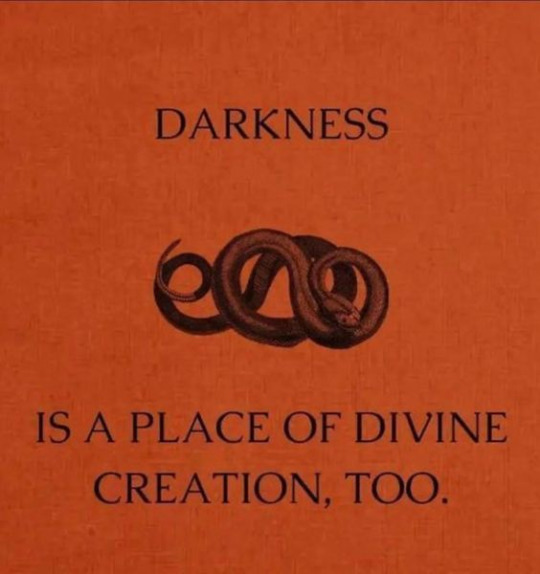
1K notes
·
View notes
Text














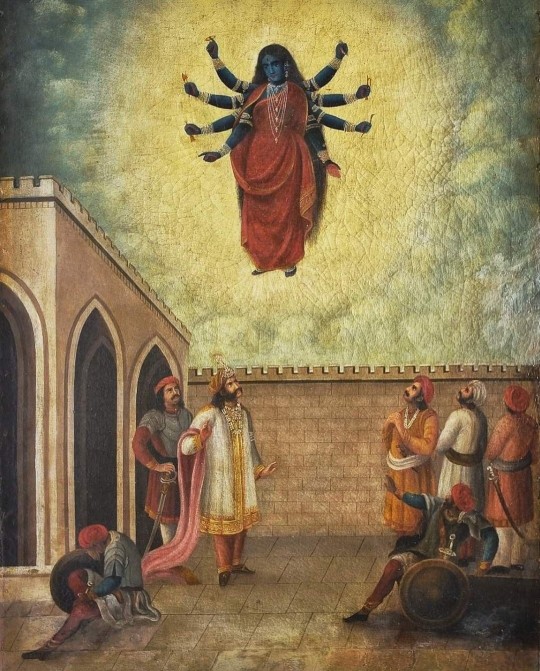




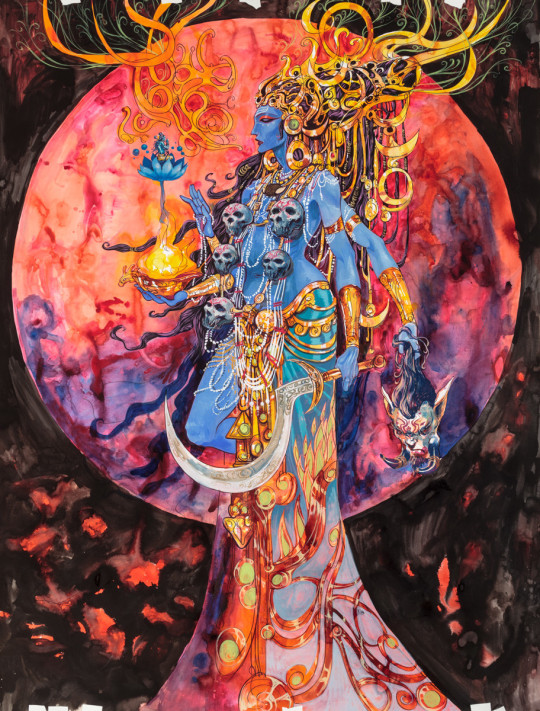







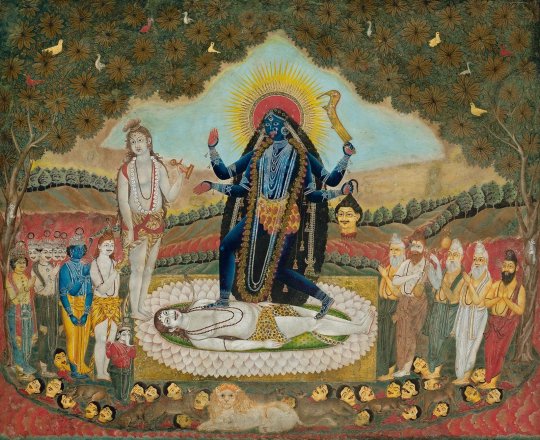


Kali 1
177 notes
·
View notes
Text

3 notes
·
View notes
Text
ᴛᴀʀᴏᴛ ᴛᴀʟᴋ: ᴀ ᴅᴇᴇᴘ ᴅɪᴠᴇ ɪɴᴛᴏ ᴛʜᴇ ʜᴇʀᴍɪᴛ ᴄᴀʀᴅ

• The Hermit Card •
1. Core Meanings
Keywords: Introspection, solitude, wisdom, guidance, inner journey, self-reflection, enlightenment.
Themes: Seeking deeper truths, stepping back from external distractions, discovering inner wisdom, being a beacon for others through personal experience.
2. Symbolism and Imagery
The Lantern: The Hermit carries a lantern, symbolizing the light of wisdom and inner guidance. It only illuminates a small area, suggesting that the journey is taken one step at a time. Inside the lantern, the six-pointed star (often the Star of David) represents divine wisdom and the connection between heaven and earth.
The Staff: The staff he holds symbolizes support and stability, often representing the strength gained through inner work and self-trust. The staff acts as both a grounding tool and a guide.
The Cloak and Hood: The cloak and hood signify protection, introspection, and concealment. They represent the decision to turn inward, where true insight is often hidden from the outside world.
The Snowy Landscape (in some decks): The isolated, often cold landscape around The Hermit reflects solitude and a “winter” of the soul—times when we withdraw to reflect, regroup, and seek wisdom within.
3. Numerology and Astrology
Numerology - 9: The number 9 is associated with completion, fulfillment, and attainment. It’s a number of spiritual insight and serves as the end of a cycle, preparing for renewal and the beginning of something new.
Astrological Correspondence - Virgo: Virgo’s energy aligns with The Hermit’s themes of introspection, analysis, and a focus on self-improvement. Virgo brings a meticulous and service-oriented energy to this card, highlighting the Hermit’s role as both seeker and teacher.
Planet - Mercury: Ruled by Mercury in its association with Virgo, The Hermit’s energy combines communication with introspection. This reflects the Hermit’s role in translating inner wisdom into guidance for others, even if his insights are not immediately shared.
4. Deeper Meanings and Interpretations
Spiritual Growth and Enlightenment: The Hermit often appears when you are called to turn inward to seek spiritual growth or find answers within. This card encourages meditation, self-reflection, and a retreat from external noise to find inner clarity.
Solitude and Self-Reliance: The Hermit values solitude, not as isolation, but as a means of cultivating self-reliance and self-trust. This card invites you to embrace moments of aloneness as a source of strength.
Guidance and Mentorship: Sometimes, The Hermit symbolizes a mentor or guide entering your life. In this role, the Hermit can represent a teacher or wise elder, one who shares wisdom and experience. Alternatively, it may signify your own role as a guiding light for others through the knowledge you’ve gained.
Inner Truth and Clarity: The Hermit encourages you to seek the truth of a situation by withdrawing from outside influences. In this card, clarity comes not from logical reasoning alone but from intuitive understanding and inner listening.
5. Reversed Meaning
Keywords: Loneliness, isolation, ignoring inner guidance, feeling lost, excessive withdrawal.
When reversed, The Hermit may indicate an unwillingness to look within or a period of excessive isolation, possibly leading to feelings of loneliness or disconnect. It can also suggest you’re ignoring inner wisdom, focusing too much on external guidance, or struggling to re-enter the world after a period of solitude.
This reversal may call for balance—knowing when to turn inward and when to re-engage with the world. It reminds you not to lose yourself in introspection and to be open to sharing your journey.
6. Associations and Connections
Herbs: Sage (clarity and wisdom), mugwort (enhancing intuition), lavender (calming the mind).
Crystals: Amethyst (spiritual insight), labradorite (self-discovery), and clear quartz (clarity of mind).
Deities: Hekate (goddess of crossroads and inner wisdom), Thoth (Egyptian god of wisdom and knowledge), and Odin (Norse god of wisdom and introspection).
Colors: Grey (neutrality, wisdom), white (purity, enlightenment), and deep blue (spiritual depth).
7. Meditative Questions and Prompts
Where in your life could you benefit from more introspection or solitude?
What inner wisdom are you seeking to uncover, and how can you access it?
How can you act as a guiding light for others, based on your own experiences?
Are there any influences in your life clouding your perception of your truth?
8. Practical Applications
For Meditation: Sit quietly, focusing on your inner light as if it were a lantern guiding you through the dark. Visualize it illuminating the answers you seek, one step at a time.
Journaling: Reflect on a time when solitude helped you gain perspective. Write about the wisdom you found in that experience.
In Daily Life: Allow yourself to step back from social pressures or the need for external validation. Practice moments of stillness and quiet, listening to your inner voice.
9. Affirmation
“I seek wisdom within, honoring the light that guides my journey of self-discovery.”






Decks:
1. Marseille
2. Thoth by Alistair Crowley
3. Light Seer's by Chris-Ann
4. Muse Tarot by Chris-Ann
5. Sabina Nore (painting)
6. Haindl Tarot by Hermann Haindl
Up top - Rider Waite
#tarot talk#tarot#tarot journal#tarot grimoire#grimoire#divination#the hermit#the hermit card#witch#witchy#witchcraft#witchblr
25 notes
·
View notes
Text

#quote#affirmations#i am#witch#witchy#dark goddess#witchcraft#quotes#witchblr#divine feminine#goddess
7 notes
·
View notes
Text
🪻Herb Spotlight: Lavender 🪻

🌱 Scientific Name: Lavandula angustifolia 🌱
☿ Planetary Association: Mercury ☿
💨 Elemental Association: Air 💨
♊♍ Zodiac Association: Virgo, Gemini ♍♊
💜 Chakra Association: Third Eye, Crown 💜
🪻History and Origins 🪻
Lavender has been cherished for over 2,500 years for its therapeutic and magical properties. The name comes from the Latin lavare, meaning "to wash," due to its use in Roman baths. In ancient Egypt, lavender was used for mummification and perfume. Both the Greeks and Romans utilized its antiseptic and calming properties. Lavender spread throughout Europe and the Americas and became a staple in gardens and medicine cabinets, especially valued for its ability to soothe and relax.
🪻Magical Properties🪻
Protection: Lavender is powerful in spells for psychic protection and shielding from negative energies.
Purification: Burn lavender or use it in baths to cleanse both spaces and individuals spiritually.
Peace and Harmony: It brings peace to relationships and is often used in love spells or placed under pillows for restful sleep and dream work.
Psychic Awareness: It enhances intuitive abilities, making it an excellent herb to use in divination or meditation practices.
Healing: Lavender is a natural healer for both physical and emotional ailments. Incorporate it in rituals for health and well-being.
🪻Medicinal Uses🪻
Relaxation and Sleep: Lavender’s calming scent can reduce stress and promote sleep, making it popular in aromatherapy.
Pain Relief: Apply lavender oil topically for relief from headaches, muscle pain, and minor burns or cuts.
Skin Care: Its antibacterial properties make it useful in treating skin conditions, from acne to eczema.
Respiratory Support: Lavender can help ease respiratory issues such as asthma, colds, and allergies.
🪻Culinary Uses🪻
While lavender is potent and should be used sparingly, it adds a floral note to foods:
Tea: Lavender tea is known to soothe anxiety, improve sleep, and calm digestive issues.
Baked Goods: Infuse honey, cakes, or cookies with lavender for a light, floral flavor.
Seasoning: Lavender is often included in the Herbes de Provence blend, which enhances savory dishes.
🪻Symbolism and Folklore🪻
Lavender symbolizes love, peace, and devotion. In folklore, it was believed to ward off evil spirits and protect those who carried it. Lavender’s ability to attract love and harmony made it a popular herb in love spells and potions.
🪻How to Use Lavender in Rituals🪻
Aromatherapy: Use lavender essential oil in a diffuser to promote peace and balance in your space.
Incense or Smudging: Burn dried lavender to purify your altar or home.
Bath Rituals: Add lavender oil or flowers to your bath for relaxation and spiritual cleansing.
Dream Work: Place lavender under your pillow for restful sleep, lucid dreams, and protection from nightmares.
🪻Deities Associated with Lavender🪻
Lavender is sacred to many deities, particularly those connected to healing, love, peace, and protection. Here are a few prominent examples:
Hekate: As the goddess of witchcraft and magic, Hekate is linked to lavender’s purifying and protective properties. Use lavender in rituals to connect with her for guidance or protection.
Aphrodite (Venus): The goddess of love and beauty, Aphrodite is associated with lavender’s calming and loving energy. It is a common herb in love spells dedicated to her.
Eir: In Norse mythology, Eir is the goddess of healing. Lavender’s medicinal properties make it a suitable offering to her when seeking health and wellness.
Brigid: The Celtic goddess of healing, poetry, and fertility, Brigid is honored with herbs like lavender for their soothing and healing nature.
Airmid: Another Celtic goddess of healing and herbalism, Airmid is linked to lavender for its restorative properties. Use it in rituals to call upon her healing energies.
Quan Yin: The Chinese goddess of compassion and mercy, Quan Yin, is associated with lavender for its peaceful and healing qualities. It is a fitting herb to use in emotional healing rituals.
Artemis (Diana): Lavender is associated with Artemis, the goddess of the moon and nature. It can be used in moon rituals or for protection under her influence.
Hygieia: The Greek goddess of health and cleanliness, Hygieia, is linked to lavender for its ability to purify and cleanse spaces spiritually and physically.

#herb spotlight#herbs#herb magic#herbalism#kitchen witch#green witch#plant magic#lavender#witchcraft#witch#witchy#witchblr#Grimoire
19 notes
·
View notes
Text
💫 Current Astrology: Pluto at 29° Capricorn

As Pluto completes its transit through Capricorn and approaches 29°, we stand at the threshold of a profound shift in collective consciousness, societal structures, and personal transformation. This degree represents the critical end of Pluto's 15-year journey through Capricorn, and its symbolism carries the weight of closure, finality, and reckoning with long-standing systems of power. This moment marks the end of an era that none of us will witness again in our lifetime.
Pluto in Capricorn: Reshaping Power and Structure
Pluto, the planet of transformation, destruction, and rebirth, entered Capricorn in 2008. During this transit, we witnessed a global reorganization of power structures, financial systems, governments, and institutions. Capricorn, ruled by Saturn, represents authority, discipline, and tradition—elements that Pluto sought to expose, dismantle, and rebuild.
From economic crises to political upheavals, this era has challenged our understanding of authority and forced us to confront the imbalances in the systems we rely on. Institutions that seemed indestructible faced significant restructuring, while individuals experienced intense lessons in personal responsibility, ambition, and long-term goals. Now, as Pluto reaches 29°, the anaretic or "critical" degree, the tension between old and new comes to a head.
The Anaretic Degree: Crisis and Transformation
The 29th degree of any sign is known as the anaretic degree, symbolizing the culmination of that sign’s energy. With Pluto at 29° Capricorn, we are being asked to reflect on the lessons learned during this transit, especially regarding the themes of control, authority, and societal structures. It’s a time of reckoning, where we face the consequences of decisions made over the past 15 years.
At this degree, Pluto doesn’t just offer closure—it demands it. Old structures that no longer serve humanity's evolution will be torn down, creating space for new paradigms to emerge. The intensity of this degree often feels like a "do-or-die" moment, where we must confront unresolved issues before fully moving forward.
The End of an Era
The transition of Pluto from Capricorn into Aquarius is a monumental one. Pluto takes approximately 248 years to orbit the Sun, meaning we won’t experience Pluto in Capricorn again in our lifetimes. This transit’s final moments signify the end of an era dominated by hierarchical power, top-down governance, and rigid control.
Pluto's departure from Capricorn signals a shift from the old world order into a future that values collective innovation, technological advancements, and a reimagining of what power and leadership mean in society. As the last remnants of Pluto’s Capricorn lessons play out, we can expect to see a final wave of challenges to long-standing authorities, corporations, and systems of control.
Preparing for Pluto in Aquarius
With Pluto poised to enter Aquarius, we are stepping into a new age that will prioritize community, equality, and futuristic thinking. Pluto’s influence will now focus on transforming how we relate to technology, social structures, and collective power. While Capricorn taught us about discipline, authority, and control, Aquarius will push us to innovate, decentralize power, and embrace the future.
As we prepare for this new chapter, it’s crucial to reflect on how Pluto in Capricorn shaped our lives—personally, socially, and globally. This is a moment to honor the past while embracing the inevitable transformations that await in Aquarius, where power will shift from the hands of a few to the collective.
Pluto’s journey through Capricorn has been a time of profound change, challenging the structures that define our world. At 29°, we face the final tests and opportunities for transformation, marking the end of an era. As Pluto transitions into Aquarius, the stage is set for a future built on innovation, equality, and shared power. This cosmic shift is one we will not see again in our lifetimes, making this moment all the more significant for us to reflect on, learn from, and move forward with greater consciousness.
#current astrology#astrology#astrology updates#intuitive astrology#anaretic degree#Pluto#Pluto in Capricorn#Pluto in Aquarius#age of aquarius#aquarian age#astrology grimoire#celestial witch#witch#witchy#witchcraft#witchblr#astrology witch#astrology notes
6 notes
·
View notes

